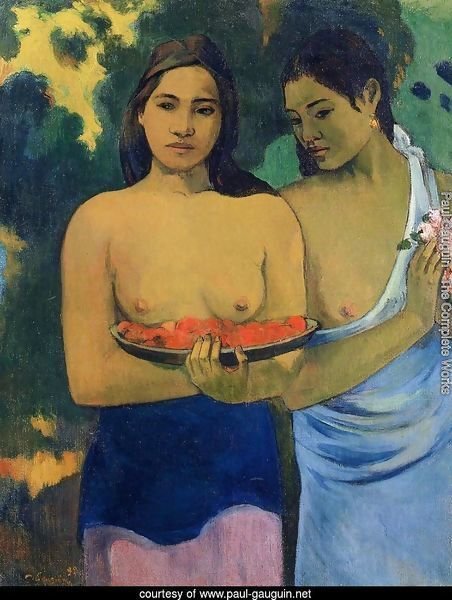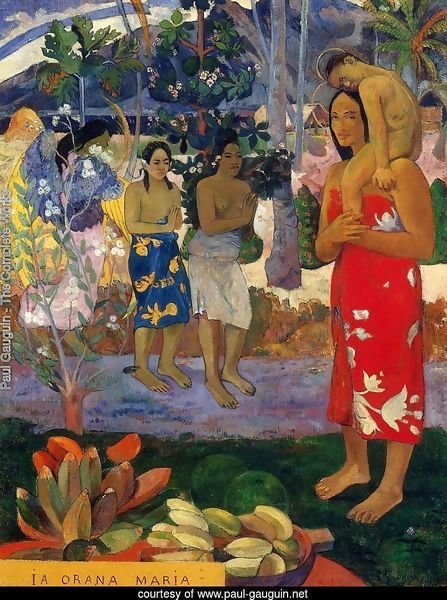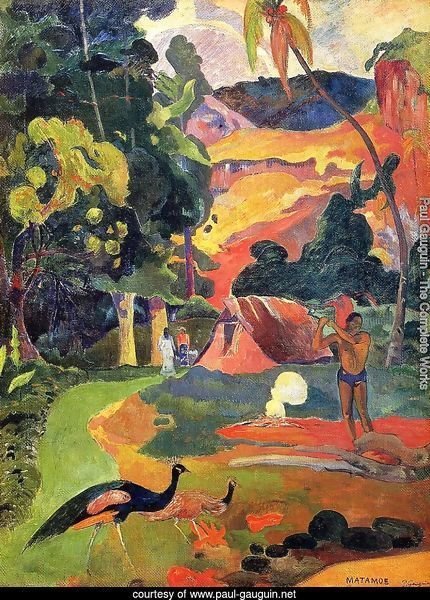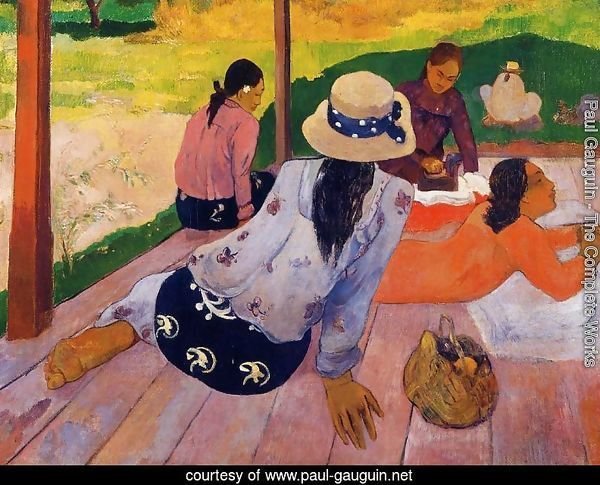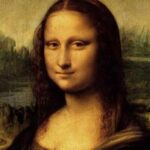Eugène Henri Paul Gauguin was a world-renowned French Post-Impressionist artist, printmaker, and sculptor. Although famous for his experiments and painting innovations, he is mainly remembered as an icon of artistic liberty which gave up everything else for his artistry.
Gauguin’s style influenced numerous avant-garde techniques from the late 19th century to the early 20th century. An epitome is his bold and innovative use of coloring in addition to the exaggerated body proportions. This had a formative influence on the Synthetist style of art. Additionally, Gauguin’s use of the Cloisonnist style for expressing his mystical and emotional themes directly paved the way for Primitivism. If you’re interested in oil paintings and want to start here’s a Guide To Using Oil Paints.
Toward the end of his life, Gauguin left European civilization for a self-imposed exile in Tahiti, French Polynesia. He spent roughly a decade on the island painting breathtaking images of natives and their exotic landscapes. In this article, we examine some of Gauguin’s best works, particularly during his time in French Polynesia.
Background about Paul Gauguin
Gauguin was born in Paris (on June 7, 1848) during a time of revolutionary upheavals in Europe. As a result, his family fled France for his mother’s native Peru. However, the Peruvian civil war saw the family moving back to France in 1854.
Although a stockbroker by profession, Gauguin developed an interest in art and began painting in his spare time. By the 1980s, he had quit his job in the stock market and painted full-time as an Impressionist.
Subsequently, Gauguin became restless and developed a distaste for traditional European art. As a result, he left Europe for Tahiti in 1891 and spent the remainder of his life there. During this period, most of painter Paul Gauguin’s finest works were produced.
Two Tahitian Women
This 1899 oil painting by the French painter Paul Gauguin depicts two semi-nude indigenous women holding flowers and fruits. The first woman stares directly at the viewer while the other looks away. According to Gauguin’s writings on the painting, the women are described as “capable of walking around naked without shame.”
As opposed to the European beauty standards Gauguin was used to painting, he took great care in expertly highlighting the Polynesian features of the women. In addition, he used sculpturally modeled figures, facial expressions, and gestures to present the “Tahitian Eve” in his paintings.
In 1949, the painting was gifted to the Metropolitan Museum of Art, New York, USA, by William Church Osborne. It is currently on display at the European Paintings Collection of the Museum.
La Orana Maria (Hail Mary)
This is one of Gauguin’s earliest works after he arrived in Tahiti. It is an oil painting that dates back to 1891, when he left France for the region. The masterpiece is housed at the Metropolitan Museum of Art, New York, USA.
The painting is a Polynesian representation of the famous art theme, Madonna and Child. It depicts two Polynesian women centered in the painting, greeting the Polynesian Madonna and Child. The work is set in a mountainous background and lush greenery with fruit baskets lying at Madonna’s feet.
The Madonna in the foreground has a calm demeanor. She gracefully smiles at the viewer as her hands clasp her little boy’s foot as it dangles over her chest from his seated position on her left shoulder. Mother and child both sport the signature halos of the Madonna and child theme.
Matamoe (Landscape with Peacocks)
Regarded as one of Paul Gauguin’s finest paintings, this simple yet captivating scene captures the primitive beauty of a tropical paradise. The viewer is instantly sucked into the beautiful world bursting with vibrant colors and natural splendor.
The 1892 oil painting depicts a cleared area in a dense jungle. There is a hut in the background with two figures, possibly women, standing beside it. In the foreground, a man wearing a loincloth chop is captured with an ax raised above his head. A small fire burns beside him as two peacocks strut by.
The title, Matamoe (death), has been the topic of much debate as some believe it is a spelling error that should’ve been Matamua (once upon a time). It resides in the Pushkin Museum of Fine Art, Moscow, Russia.
The Siesta
This is an oil painting produced by Gauguin artist circa 1893. It captures a group of Tahitian women in western clothing, reminiscent of old colonial fashion magazines. The women leisurely enjoy the cool shade of a roofed porch as they chat and perform their duties in the hot afternoon sun.
Although a simple painting depicts the mundane activities of everyday life, Gauguin worked on it for an extended period, often making changes to the details. This includes changing clothing color to replacing a dog with a shopping basket.
Gauguin uses bright colors to enhance the day’s warmth and add vibrance to the painting that is currently housed at the Metropolitan Museum of Art, New York, USA.
Yellow Christ
This is the only painting on the list that was created in Tahiti. The cloisonne style painting was produced in Pont-Aven, France, in 1889. It is a symbolic work depicting the crucified Jesus surrounded by Brenton women in 19th-century France.
The autumn shades of yellow, red, and green in the background intensify the dominant yellow in the character of Christ. The painting, together with another one of Gauguin’s paintings of Christ—The Green Christ—is considered a vital work of symbolism.
Around 1890, Gauguin painted a self-portrait with the painting in the background titled Autoportrait au Christ Jaune (Self-portrait with the Yellow Christ). The artwork is currently located at the Albright–Knox Art Gallery, New York, USA, while a watercolor version resides at the Art Institute of Chicago, Chicago, USA.
Conclusion
Gauguin’s career enjoyed praiseworthy success despite the absence of formal art education. His robust catalog of works attests to his determination and desire for artistic liberty. A desire fuelled his quest for newer and richer inspiration and established his artistry as a force to reckon with, still influencing several other artists today.
